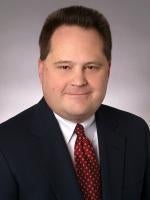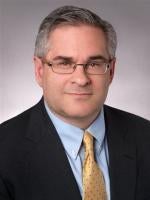On March 30, 2009, the United States Supreme Court heard oral argument in an action against Travelers relating to the Johns-Manville bankruptcy in the 1980s. The Second Circuit Court of Appeals held that direct actions against Travelers for independent liability to the asbestos claimants were not barred by the “channeling” injunction included in the bankruptcy court’s order in 1986. In Re: Johns-Manville Corporation, Debtor, 517 F.3d 52 (2d Cir. 2008). The case will have implications for the jurisdiction of bankruptcy courts where the debtor has significant asbestos (or other mass tort) liabilities.
By most sources, Manville was the largest manufacturer of asbestos-containing products in the United States from the 1920s to the 1970s. Manville became the target of thousands of product liability lawsuits in the 1960s and 1970s. Manville filed for Chapter 11 bankruptcy protection in 1982. Manville’s insurance policies were the most valuable asset in the bankruptcy estate. However, Manville was engaged in extensive litigation with its insurers regarding the scope and limits of its insurance policies. Manville ultimately settled with its insurers for approximately $770 million.
Travelers, which was Manville’s primary insurer from 1947 to 1976, paid nearly $80 million into the bankruptcy estate in exchange for a “full and final release of Manville-related claims.” The settlement, like those of all the other insurers, was predicated on the bankruptcy court issuing an injunction barring suits against Manville’s insurers (including Travelers) and directing litigation by potential claimants to the Manville Trust. The injunction was embodied in the 1986 Confirmation Order and the 1986 Insurance Settlement Order, and channeled to the Manville Trust all claims that were based upon, arose out of, or related to Manville’s liability insurance policies. The Confirmation Order enjoined all persons from commencing any action against any settling insurer “for the purpose of, directly or indirectly, collecting, recovering, or receiving payment of, on or with respect to” any asbestos claim.
Despite the 1986 orders, various groups of plaintiffs subsequently filed lawsuits directly against Travelers and other insurers under a variety of legal theories. The claims against Travelers were based on allegations that Travelers had acquired knowledge of the dangers of asbestos during its long tenure as Manville’s insurer. The plaintiffs alleged that Travelers acquired knowledge regarding the dangers of asbestos in the 1950s, recognized the potential for future escalation of asbestos litigation and influenced Manville’s failure to disclose its knowledge of asbestos hazards. The lawsuits alleged that Travelers breached statutory or common law duties to the plaintiffs when it allegedly suppressed or failed to disclose this information. The Second Circuit noted that many of these theories have never been accepted by any court.
In 2002, Travelers moved the bankruptcy court to enjoin the 26 independent actions pending in Louisiana, Massachusetts, Texas and West Virginia state courts pursuant to the 1986 orders. The bankruptcy court referred the matter to mediation and appointed the former governor of New York, Mario Cuomo, as the mediator. Certain of the classes of plaintiffs settled with Travelers. The settlements totaled almost $500 million and were conditioned upon the entry of an order by the bankruptcy court clarifying that the direct actions were and always had been prohibited by the 1986 orders. Other parties, including the non-settling classes of plaintiffs, objected. The bankruptcy court approved the settlement and entered a “Clarifying Order” specifying that the direct actions were barred by the 1986 orders. The court concluded that the claims were “creatively pleaded attempt” to collect indirectly under the Manville policies. The District Court largely affirmed the bankruptcy court ruling.
On appeal, the Second Circuit Court of Appeals reversed. The court stated the issue in the case was whether the bankruptcy court had jurisdiction to enjoin third-party non-debtor suits against Travelers. Travelers argued that the bankruptcy court was merely enforcing its own 1986 order. The claimants asserted that they were not seeking to recover from an insurer contractually obligated to indemnify Manville, but were seeking to recover directly from Travelers for Travelers’ separate acts. While the Court of Appeals agreed that the bankruptcy court had jurisdiction to clarify its own order, that clarification could not be used as a predicate to enjoin claims over which the court had no jurisdiction. Thus, the issue was whether the court had jurisdiction over the direct claims.
The Court of Appeals concluded that the claims against Travelers did not arise out of claims against the Manville estate. Travelers conceded that the claims against it sought damages that that were unrelated to the policy proceeds. Moreover, the claims did not seek to collect damages on the basis of Manville’s conduct. Instead, the plaintiffs sought to recover directly from Travelers, a non-debtor insurer, for its own misconduct. The court stated that the plaintiffs neither sought to recover insurance proceeds nor relied on the insurance policies for recovery.
The court concluded that the fact that the bankruptcy court’s order was a clarification of its prior order does not alter the jurisdictional predicate necessary to enjoin third-party non-debtor claims. The plaintiffs sought to recover directly from Travelers for its own independent wrongdoing. Plaintiffs intended to pursue the assets of Travelers, and made no claim against Manville’s insurance. They made no claim against the bankruptcy estate, and the actions did not affect the estate. Therefore, the Court Appeals held that the bankruptcy court had no jurisdiction to enjoin the direct claims against Travelers.
The bankruptcy court had also ruled that the direct claims against Travelers arose out of or were related to the claims against Manville, because Travelers would not have contributed funds to the trust without assurances that any liabilities relating to its insurance relationship with Manville would be fully and finally released. The Court of Appeals held that it was inappropriate for the bankruptcy court to enjoin claims against a non-debtor solely on the basis of that non-debtor’s financial contribution to the debtor’s estate. Instead, a bankruptcy court only has jurisdiction to enjoin claims against third-party non-debtor claims that directly affect the res of the bankruptcy estate. The court did not question that, in a literal sense, the claims against Travelers arose out of its provision of insurance to Manville. However, a channeling injunction is only appropriate to enjoin claims against third-parties where the third-party has derivative liability for claims against the debtor. In this case, the claimants were not making claims under the Travelers policies but were seeking to recover directly from Travelers for its own misconduct. The bankruptcy court did not have jurisdiction to enjoin those claims.
As noted above, the United States Supreme Court agreed to review the Second Circuit decision and the matter has been fully briefed and was argued on March 30, 2009. The case could have important ramifications for insurers facing asbestos claims against policyholders that are experiencing financial difficulties. A decision is expected by June.



 />i
/>i
